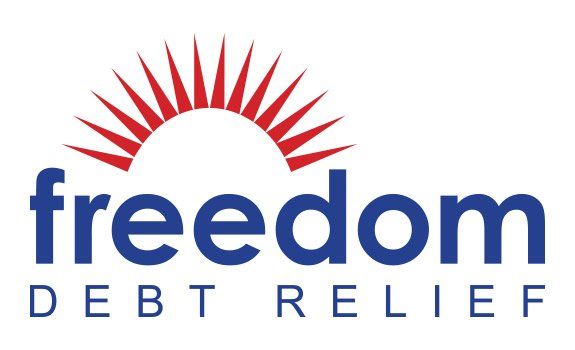Do it Yourself Debt Strategies

- Do-it-yourself debt payoff involves making a plan to pay off debt.
- You could consolidate your debt or make extra payments.
- You could try to negotiate a debt settlement plan with your creditors.
Many people who need debt relief turn to a professional debt settlement company for help. Professional debt relief companies negotiate with creditors for you. If you need the help, it’s there. But you could also explore your options for do-it-yourself debt payoff first.
DIY debt strategies could work if you have:
A: Extra money to pay creditors,
B: Good enough credit to pursue debt consolidation, or
C: The confidence to negotiate with creditors on your own.
If you're interested in do-it-yourself debt strategies, here's what you need to know.
Make Extra Payments On Your Debt
If you have extra money to send to those you owe, you could make extra payments to your creditors until your debt balance is paid down to $0.
If you take this approach, continue making the minimum payments on all of your debts, but also make extra payments against one.
You could:
Make extra payments on your debt with the smallest balance first.
Make extra payments on your debt with the highest rate first.
The first approach is called the debt snowball method. The idea is to score a quick win by taking the quickest path to paying off your first account. As each debt is paid off, you're more motivated to pay the next one.
Once your first debt is paid in full, you roll all of the extra payments you were making toward it into your payment on the next debt on your list (in addition to the minimum payment you were already making). As you pay off each debt, your payment towards the next one gets bigger and bigger, just like a snowball rolling downhill.
The second approach is called the debt avalanche method. This could save you money in interest charges over time, so it makes the most mathematical sense. However, if your most expensive debt has a large balance, it may take you a long time to pay it off in full. This can be frustrating, and cause you to lose momentum.
An advantage to debt snowballs and debt avalanches is that either strategy could help you build and maintain a strong credit profile. Making on-time payments and reducing your debts are two huge steps toward good credit.
Consolidate Your Debt
Debt consolidation involves getting a new loan to pay off multiple existing debts. It’s simpler to make one payment instead of many.
Many people use a personal loan for debt consolidation. You would need to meet the lender’s qualification guidelines.
If you’re a homeowner and you have enough home equity to borrow against, you could use a home equity loan or HELOC. Home equity loans are guaranteed by your home and tend to be less expensive than other kinds of loans. But if you don’t repay the debt, you could lose your home.
When you consolidate debt, your new loan ideally has a lower interest rate than the debts you're paying off. The monthly payment on the new loan could be lower than the total of all the monthly payments you’re making now. Note that if you opt for a longer loan term and a lower monthly payment, you could pay more in interest overall.
If you move credit card debt to an installment loan, your credit standing could improve. That’s because high credit card balances have a negative impact on your score. Installment loan balances don’t affect your credit standing in the same way.
Any time you apply for a new loan, you could temporarily lose a few credit score points. This is because your credit report will be checked by the lender—this is called a hard credit inquiry.
Have a plan to avoid charging up your credit cards again once you've used a consolidation loan to pay them off. Doing so could leave you deeper in a debt hole.
Settling Debt
Finally, debt settlement is an option when you want to DIY your debt.
Debt settlement means getting your creditor to agree to accept less than the full amount you owe but consider it payment in full. Creditors may be willing to do this if it’s clear that you have a financial hardship and can’t afford to fully repay your debt. Debt settlement only works with unsecured debt, like medical bills, personal loans, and credit cards. It's not an option if you're struggling with a mortgage or an auto loan.
Negotiating can be difficult and time-consuming. Creditors want to be repaid, and you should expect them to say so if you call and ask for partial debt forgiveness. To successfully negotiate, you’ll need plenty of grit and patience.
Also, settling debt isn’t free. You’ll need to have something to offer your creditors. If you want to offer a single lump-sum payment, you’ll need to have that money ready. To save this money, most people pursuing debt settlement choose to stop paying their creditors. (It’s hard to afford both.) Also, creditors may be less willing to negotiate if your payments are on time and current and it’s clear that you can afford to keep up. Stopping payments is a clear signal of financial distress.
If you miss debt payments, expect a negative impact on your credit. Missed payments and collection accounts stay on your credit report for seven years. It’s possible to build up to a good credit score over time, no matter how far down the scale you start.
Working with a professional debt relief company could increase your chances of successful debt settlement. A reputable debt settlement company should already have relationships with your creditors.
If you think debt settlement may be your best method of tackling your debt issues, learn more about why you should choose Freedom Debt Relief, and how we can help you.
Debt relief stats and trends
We looked at a sample of data from Freedom Debt Relief of people seeking a debt relief program during October 2025. The data uncovers various trends and statistics about people seeking debt help.
Credit utilization and debt relief
How are people using their credit before seeking help? Credit utilization measures how much of a credit line is being used. For example, if you have a credit line of $10,000 and your balance is $3,000, that is a credit utilization of 30%. High credit utilization often signals financial stress. We have looked at people who are seeking debt relief and their credit utilization. (Low credit utilization is 30% or less, medium is between 31% and 50%, high is between 51% and 75%, very high is between 76% to 100%, and over-utilized over 100%). In October 2025, people seeking debt relief had an average of 74% credit utilization.
Here are some interesting numbers:
| Credit utilization bucket | Percent of debt relief seekers |
|---|---|
| Over utilized | 30% |
| Very high | 32% |
| High | 19% |
| Medium | 10% |
| Low | 9% |
The statistics refer to people who had a credit card balance greater than $0.
You don't have to have high credit utilization to look for a debt relief solution. There are a number of solutions for people, whether they have maxed out their credit cards or still have a significant part available.
Personal loan balances – average debt by selected states
Personal loans are one type of installment loans. Generally you borrow at a fixed rate with a fixed monthly payment.
In October 2025, 44% of the debt relief seekers had a personal loan. The average personal loan was $10,718, and the average monthly payment was $362.
Here's a quick look at the top five states by average personal loan balance.
| State | % with personal loan | Avg personal loan balance | Average personal loan original amount | Avg personal loan monthly payment |
|---|---|---|---|---|
| Massachusetts | 42% | $14,653 | $21,431 | $474 |
| Connecticut | 44% | $13,546 | $21,163 | $475 |
| New York | 37% | $13,499 | $20,464 | $447 |
| New Hampshire | 49% | $13,206 | $18,625 | $410 |
| Minnesota | 44% | $12,944 | $18,836 | $470 |
Personal loans are an important financial tool. You can use them for debt consolidation. You can also use them to make large purchases, do home improvements, or for other purposes.
Manage Your Finances Better
Understanding your debt situation is crucial. It could be high credit use, many tradelines, or a low FICO score. The right debt relief can help you manage your money. Begin your journey to financial stability by taking the first step.
Show source
Author Information

Written by
Ashley Maready
Ashley is an ex-museum professional turned content writer and editor. When she changed careers, she was finally able to focus on turning her financial situation around. She went from deeply in debt to homeowner in two years. Ashley has a passion for teaching others about better living through better money management.

Reviewed by
Kailey Hagen
Kailey is a CERTIFIED FINANCIAL PLANNER® Professional and has been writing about finance, including credit cards, banking, insurance, and retirement, since 2013. Her advice has been featured in major personal finance publications.
Can I do debt settlement on my own?
Yes, you can do debt settlement on your own if you're comfortable negotiating with creditors.
What is the smartest way to pay off debt?
There are many smart ways to get rid of debt.
You can use the debt snowball method to help you stay motivated. This involves making extra payments on your loan with the lowest balances first, so you can quickly pay it off and increase motivation.
You could also use the debt avalanche method and focus on paying off the debt with the highest interest rate first to maximize interest savings. This saves you the most money as long as you stay on track, even if the payoff takes a while.
The smartest thing to do is make a plan to deal with your debt, and then act on that plan.
What is a trick people use to pay off debt?
Consolidating debt is a helpful trick that could make debt payoff easier if you qualify for a new loan. If the new loan has a lower interest rate compared to your current rate, you could save money on your debt payoff.

